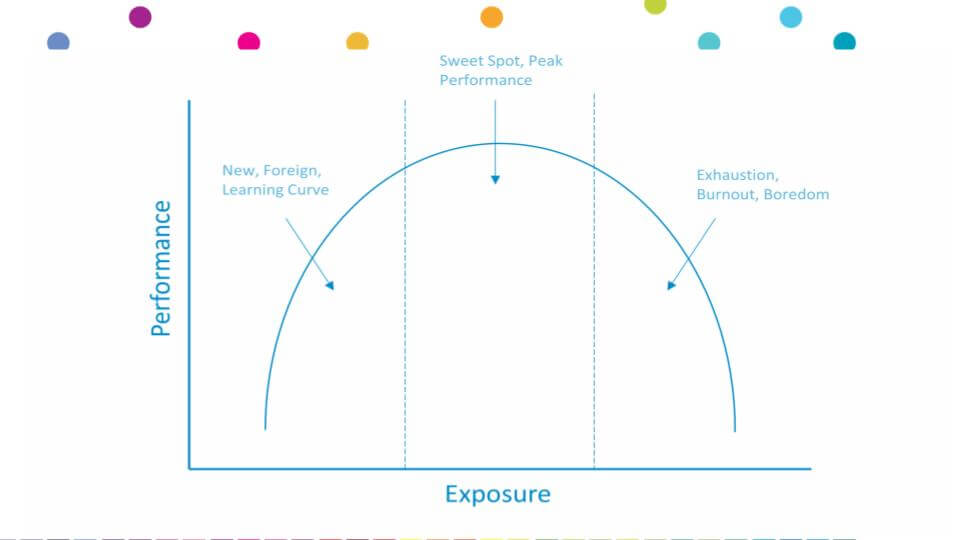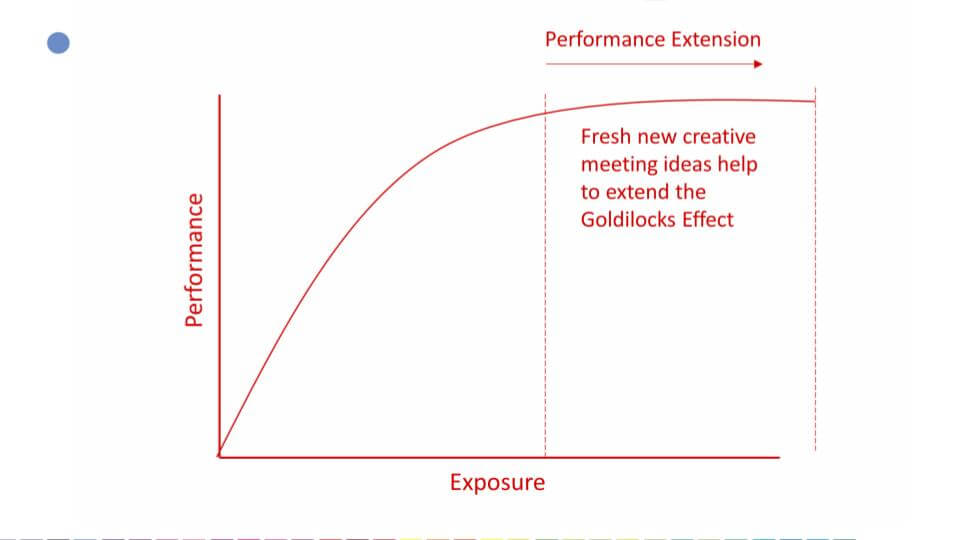Priming Attendees for Productive Meetings
There’s a process in psychology called “priming” that’s helpful in meeting scheduling. Priming is a powerful tool for meeting hosts because it helps to influence the way meeting participants will associate their role in association with the proposed meeting. Research shows that priming can influence someone to walk more slowly by having them read words such as “patient,” “polite,” or “respectful.” So, prime your meeting participants to be excited for an upcoming meeting using words such as “impressive” or “tremendous.” Depending on the type of presentation you’re planning, consider priming your meeting attendees with a catchy title or an associated image attached to the meeting invitation.
The idea behind priming
Take a moment to consider the type of priming that would be helpful for your next meeting. As a meeting host, you want to develop a reputation for scheduling engaging and useful meetings. As a meeting participant, you want to participate in thoughtful engagement that provides everyone value, but you also want to defend your own time from unproductive meetings.
The meeting agenda itself is a tool that can be used to prime attendees for a positive experience. The more time you put into the meeting agenda, the more likely your meeting attendees will come prepared to engage. You can brainstorm useful words by searching on Google. Consider searching for “exciting words” or “engaging words” that you can include helping better define the purpose of your next meeting.

Group Braining Storming
Set Yourself up for Meeting Success
Once you have set the stage for your next meeting it is time to make the magic happen. You have already prepared the agenda and your meeting attendees are aware of everyone who is attending. Depending on the type of meeting that you are hosting, you may want to prep key meeting participants with additional information.
Collaboration meetings are generally the easiest to host because the outcome is essentially based on a team sharing ideas to achieve a common goal. Presentation meetings often require more coordination between key subject matter experts and meeting attendees. Meetings that involve subject matter experts sharing content with audiences of more than twenty benefit from an attentive meeting moderator.
Moderators organize questions from an audience and curate audience engagement without disrupting the presenter’s train of thought. A simple check-in phone call before the meeting is often enough to prime a key meeting attendee for success. You can also post a poll in a relevant collaboration software channel before a meeting to gauge interest from various parties in your organization. A little research can go a long way toward steering your meeting’s agenda and engaging your meeting attendees’ interests.
Engaging large audiences is sometimes easier than small group audiences. Jonah Berger, the author of Invisible Influence, explores how social influence can affect everything from the products people buy to the satisfaction they feel for their jobs. Berger’s research notes that “people don’t think they’re influenced by others… but ninety-nine-point nine percent of all decisions are shaped by others.” Large audiences can be managed carefully using meeting moderation tools to have a positive impact on meeting productivity. For example, large meetings benefit from including questions voiced directly from meeting attendees. Yet, without moderation, most online meetings can be filled with people cutting each other off trying to determine who is supposed to speak next. A good moderator can control the audience’s ability to unmute their microphones using the raise hand feature.
Large audiences can enjoy the benefit of shared online spaces for engagement such as chat rooms and break out collaboration areas where positivity can thrive when properly moderated. An active chat room, for example, can spark creative ideas and encourage passive attendees to engage with the activity.
Facilitate positive engagement
Meeting moderators foster positive audience engagement while deterring potentially negative attention as well. One way to foster positive engagement is to come to the meeting prepared with a list of thought-provoking questions. These questions can be entered into the chat room throughout your meeting to encourage engagement throughout your meeting. Consider creating a list of questions that lead up to a climactic “turning point” question. A turning point question assumes your meeting attendees are familiar with the subject matter. Use a turning point question to apply educational subject matter to a real-world situation that applies context to your specific business.
Turning point questions can also be left open-ended. Open-ended questions are a great way to exit a meeting and leave your attendees thinking. Turning point questions that are funny can have a particularly positive effect. Popular memes are a great source for turning point media that can provoke laughter. Memes add entertainment value to make educational content more memorable. A 2019 study found that 74 percent of people send memes to make people smile or laugh and 53 percent send them to react to something. Your organization should have a collaboration system that can be used for communication before and after important meetings. You can recommend that follow-up discussions occur in specific channels on your communication platform. For example, at the end of your meeting, you can say, “let’s follow this up with your ideas in the “marketing’ channel.”
The Cliffhanger Exit
One strategy that encourages productivity after a meeting is a cliffhanger exit. What will surprise us most about this topic at next week’s meeting? There is no need to over-think your meeting exit. The Invisible Influence notes that “mere exposure [to other people] increases liking.” The more you meet with your peers, the stronger your relationships will become. The longer-term your relationship-building efforts are, the less important it is to prepare an amazing exit.
Instead, see if you can develop an inside joke with your team. Great running jokes are open-ended, and they can build team relationships with a simple connection point. Studies show that the more people see something, the more they will like it and familiarity leads to liking. Therefore, simply “Showing Face” and presenting your ideas on any subject should always be considered a benefit for relationship-building. Time is money to many people but perhaps, more importantly, time is an experience that can be shared.
Joseph Pine, the author of the Experience Economy, dissects the difference between “time well saved” and “time well spent” to explore the value of shared experiences. Time well saved, is generally associated with hiring someone to perform a service that takes a specialist less time than it would the person hiring them. Time well spent, is associated with more valuable experiences such as team building, events, and vacations that are shared with others. For example, time well saved could be helping someone through a tech support issue. Time well spent, would be collaborating on new use cases for technology that can be applied to business and building a lasting relationship with a coworker in the process.
An interesting aspect of social influence is the ability meeting hosts have to encourage people to perform better as they rally behind an idea. Norman Triplett, the scientist credited with the birth of social psychology, proved this theory by studying competitive cycling.
Triplett’s study, which came out in the 1800s, proved that cyclists cycled faster when they raced against a group of other people. His phenomenon is called “social facilitation” and it explains why people perform better in the presence of others. Applying social facilitation to meeting productivity requires an understanding of social influence. It turns out that the presence of others can have a positive or negative effect on performance depending on how complex the task is.
In the 1920s, Stanford professor Bob Zajonc proved that simple tasks like riding a bike generally see improved performance in the presence of others. But, more complex tasks like trigonometry performed in the presence of others will, on average, decrease performance.

The Goldilocks Effect
It is possible to increase your influence by simply meeting with people more frequently. The Goldilocks effect may explain why repeated exposure to other people and ideas can increase our affection for them. Repeated exposure to something can help people become more familiar with it. In his book the Invisible Influence, Jonah Berger explains how the Goldilocks effect often follows an “inverted U-shape trajectory.” This explains why something new is at first foreign, and therefore people initially feel negative toward it. Then, after increased exposure, when things become more familiar, people react positively. At the end of the U-shaped curve, if you have too much exposure to one thing, you may feel bored and again feel negatively toward it. This is the normal Goldilocks-inverted, U-shaped trajectory of affection.
The popular “Death by PowerPoint” saying sums up how many people feel about standard business meetings. Meetings with fresh ideas are more likely to engage an audience. Therefore, it becomes increasingly important to keep your meeting content fresh, the longer you continue to meet with the same audience over time, or you risk losing the interest of your meeting participants.

Extending the Goldilocks Effect
Goldilocks Extension
Think about the beginning stages of the Goldilocks effect of a new boss. At first, your new boss is unfamiliar to you and your experience is mediocre at best. Over time, your boss earns your trust and becomes a leader you look up to. It’s possible for great leaders to “buck the trend” and continue to inspire others over a long and successful career. I call this the Goldilocks Extension Process.
Conclusion
Passion and creativity are tools humans can use to extend the Goldilocks effect and plateau in a productive space. Human relationships are dynamic and online communications give us the ability to easily renew our relationships and collaborate to build deeper connections that can last a lifetime. When teams can overcome challenges together, their relationships grow stronger in a positive way. Extending the goldilocks plateau is when relationships turn in career partnerships that can turn into legacies of teamwork.
More on Online Meetings
- Get The Online Meeting Survival Guide for free here
- An introduction to Online Collaboration Software here
- Learn about the history of Online Communications here
- Check out these essential ideas for online communicators here
- Read out complete guide to Zoom Video Conferencing here
- Learn how to organize your companies collaboration channels here
Get More Out of Your Meetings
- Learn when to collaborate, and when not too in this blog post here
- Read about four strategies for hosting more productive online meetings here
- Learn more about Video Communication Etiquette here
- Learn how to use priming to create effective meetings here
- How to host a captivating webinar here
- Learn about some of the latest innovations in online communicaitons here

